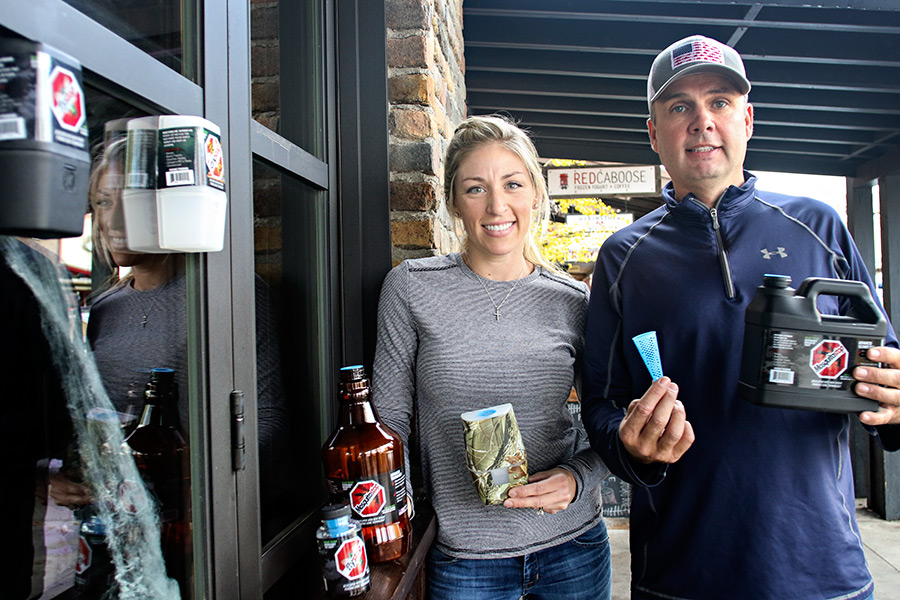WHITEFISH — A few years ago, during a hunting trip along the eastern Rocky Mountain Front, Kory McGavin spent a few nights at an old lodge near Augusta. It was beautiful, he said, but there was one big problem with it.
“There were thousands of disgusting flies everywhere,” he said, recalling the ineffective tape traps hanging from the ceiling. “I just remember thinking, ‘There has to be a better way to catch these bugs.’”
So when he returned home to Whitefish, McGavin vowed to build a better flytrap. He was so excited about his new project that he told his wife Liz when he got home — at 2 a.m.
Four years later, the McGavins are about to bring Fly Stop to market, a non-toxic, reusable flytrap that is made almost entirely in the Flathead Valley.
“I’ve switched from being a big game hunter to a big bug hunter,” Kory said.
The McGavins have been in the real estate business locally for 25 years. Kory said over the years he has seen a lot of homes with fly problems, but there was none quite like the lodge he stayed at in 2012, which convinced him to build a better trap. Over the next few years, the McGavins started experimenting with different types of traps, even going as far as breeding flies in old fish tanks to have subjects to test.
The couple said they had dozens of prototypes, and many of them caught flies but didn’t keep them contained. Liz said there were numerous occasions when the couple thought they could break out the champagne only to watch their catch fly away. Finally, they came up with a cone that lets bugs fly into the trap but not get out. After developing that, they installed it in a container attached to a suction cup that can be applied to a window.
In order to make the trap attractive to its potential guests, the McGavins picked colors that attract specific insects: black and blue for flies and clear and blue for wasps. Once the bugs get in the trap, they die within a few hours due to a lack of oxygen.
After installing the traps, the McGavins realized they had a winning design. However, they wanted to increase their odds of capturing bugs. So they worked with an entomologist to help create a non-toxic attractant they could add to the traps. Once that was added, they started capturing bugs at a shocking rate and decided to get their invention patented. As of right now, the window-based trap is patented, and they are working on acquiring the patent for the cone, which Kory calls “the secret sauce” of the trap.
Every part of the trap is made either in Montana or the United States and, for now, the McGavins assemble every trap by hand, sometimes with the help of their three children, Kaylie, Landon and Ridge.
“We could have had the tooling made in China for a lot less money, but it was really important to us to have them made right here in the United States and Montana,” Liz said.
With the product designed, the McGavins have been getting ready to sell the traps. The flytraps are already available online and will be coming to Albertsons stores next spring.
But just because they’ve designed a trap does not mean they’re done. The McGavins are currently looking at ways to sell just the cone so people can turn regular old bottles into traps.
“If you snap this cone into a regular soda bottle, you have the most inexpensive and effective flytrap ever made,” Kory said while demonstrating the product, adding that it could be a big help in poor countries.
The McGavins are also hoping to expand into the mosquito-catching business by applying their cone to an “ovitrap.” An ovitrap is a dark container with standing water that attracts female mosquitos to lay eggs. Once that happens, other mosquitos are attracted to the trap.
Although it’s still early, the McGavins are optimistic that within a few years they could start hiring employees if sales take off.
For more information, visit www.flystop.com.
